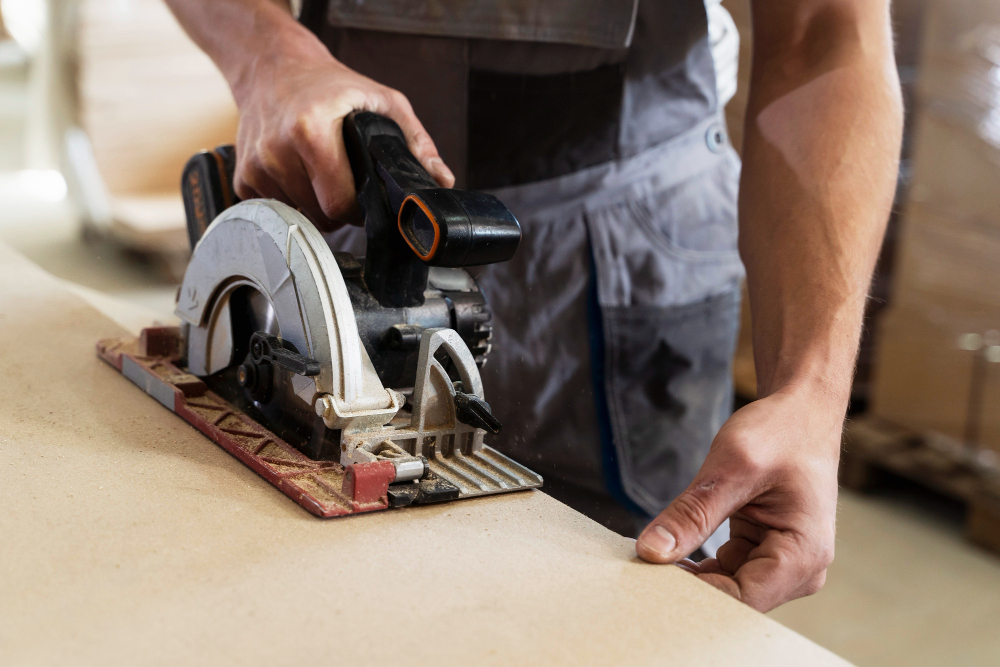How to Cut Kitchen Worktops
Cutting kitchen worktops is a critical step in the installation process, requiring precision and the right technique to ensure a perfect fit and finish. Whether you’re working with laminate, granite, wood, or any other material, the key lies in accurate measurements and the use of appropriate tools.
A well-cut worktop not only enhances the overall aesthetic of the kitchen but also ensures durability and functionality.
This guide will delve into the essential steps and tips for cutting kitchen worktops, highlighting the importance of careful planning, precise marking, and the correct handling of tools. From selecting the right saw blade to finishing the edges, each stage of the process plays a vital role in achieving a professionally finished worktop, tailored to the specific layout and style of your kitchen.
Guide on Cutting Kitchen Worktops Properly
Worktops are an integral component of your kitchen and should look good, be easy to clean, and be long-term solutions. Before selecting one as the work surface of choice, ensure you visit showrooms that showcase a wide variety of worktop options.
Laminate worktops are affordable and come in an assortment of colours. Furthermore, you can add decorative edges for added flair as well as post-form them to form organic curves, cantilevered breakfast bars, and seamless wrap-around surfaces on islands.
This table provides a step-by-step guide for cutting kitchen worktops, with additional tips tailored to the unique aspects of Scottish homes and climate.
| Step | Instructions | Specific Tips for Scotland |
|---|---|---|
| Measuring | Accurately measure the area where the worktop will be installed, considering sink and appliance placements. | Take into account the unique kitchen layouts and traditional designs often found in Scottish homes. |
| Selecting Tools | Choose the appropriate saw and blade type—fine-toothed for laminate and wood, diamond-tipped for granite or quartz. | In Scotland’s variable climate, ensure tools are durable and suitable for different worktop materials. |
| Cutting Process | Secure the worktop and cut along the marked lines, maintaining steady pressure for a clean cut. | Achieve precise cuts to fit the diverse architectural styles prevalent in Scottish kitchens. |
| Edge Finishing | Smooth the cut edges with sandpaper and apply a sealant or edge strip if necessary, especially for laminate worktops. | Pay extra attention to finishing for a refined look that matches the aesthetic of Scottish interiors. |
| Safety Measures | Wear protective gear like safety goggles, gloves, and a dust mask, and work in a well-ventilated area. | Adhere to safety standards, considering the specific working conditions in Scottish homes. |
Use a straight edge
Laminate is a composite material consisting of an outer plastic layer and a thick base layer, so a saw blade cutting straight through it without taking proper precautions can tear chunks of plastic away and damage your counter top. To avoid this scenario, clamp a straight edge onto the countertop to use as a guide when cutting, or add strips of masking tape along your line so as to protect it from the saw blade.
To prevent chipping the decorative surface of laminate, it is best to cut from beneath when using a circular saw or jigsaw with standard blades, so as to reduce the risk of cutting through factory edges, which would cause them to loosen and chip. When cutting curves or right angles in laminate, for optimal results, use a downcutting jigsaw blade that cuts on the downstroke rather than the upstroke; these will allow smoother results than standard jigsaw blades.
Make a brace from scrap wood at least twice the length of the sink cutout area to keep laminate in place as you cut. Secure it to this area using screws; this will prevent waste pieces from falling through at the end and potentially breaking off laminate on the underside.
Set the machine

An efficient circular saw is the go-to tool for cutting worktops. Available at most DIY stores for around £100 in Scotland, these powerful saws make short work of any cuts you need to make and are far superior to handsaws, which may cause chipped edges or uneven lines when cut with them.
Masking tape over your worktop surface can also prevent chips by acting as a visual guide when cutting. If you are particularly nervous about making clean cuts, practice on scrap pieces before beginning the real deal, and always support offcuts with something (wooden supports or an MFT/3 mitre attachment in this instance).
Care should be taken when cutting laminate kitchen worktops to avoid accidentally catching an edge with your blade, which may chip the material. To further decrease the chances of chipping, try cutting from beneath. A bead of caulk along the edge where it meets cabinets below will prevent moisture seepage and spoiling its finish; this step is critical if you want your finished worktop to look its best.
Clamp the worktop.
Avoid getting your saw stuck into the worktop and potentially injuring yourself by clamping it correctly prior to cutting. This will ensure that it remains attached, limiting how it moves while being used by ensuring its blade does not slip out when in use.
There is an assortment of worktop clamps on the market, so you should easily be able to find something suitable for your task. C clamps will likely provide the best security; alternatively, some duct tape may help secure it more effectively.
Once your clamps are in place and the strip has been butted up to the back edge of the worktop, it is time to apply glue. Make sure you use an Evo-Stik, Everbuild, or Soudal contact adhesive designed specifically for worktop edges to apply this layer of glue evenly along its entirety and reach all edges of your strip itself.
If you can’t access any contact adhesive, a worktop repair filler like GrippFill will work just as effectively to fill in small chips and scratches while protecting the worktop edge from water ingress.
Making the cut
Worktops often bear the brunt of wear and tear. From knife cuts and chops to heat, cookware being dragged across them and spilled oils and spills, worktops experience regular abuse that leaves dull patches or scratches even on high-quality worktop materials. With the proper tools and care when cutting laminate surfaces, however, you can make your worktop appear like new again.
To avoid chipping the laminate when cutting, start by creating a straight line with masking tape across your worktop. This will allow you to mark an accurate line while protecting it from potential scratches caused by the saw blade. If using a circular saw with a carbide blade, ensure it fits the diameter of your counter before cutting from behind rather than from in front.
If you are cutting a sink hole into a countertop, a jigsaw equipped with a reverse-cutting blade is a useful way to avoid chipping laminate countertops. Just ensure the blade is set at an appropriate depth so as not to bounce while cutting and maintain downward pressure so the saw does not bounce around during this process.
To achieve a cleaner and more precise finish, consider investing in a router saw. Available from most good DIY stores for approximately £50, this device can often replace jigsaws as the go-to choice for precise cutting jobs.

Olivia is a literature enthusiast and film critic who explores the connections between books and their movie adaptations. She loves diving into character development and storytelling techniques.

